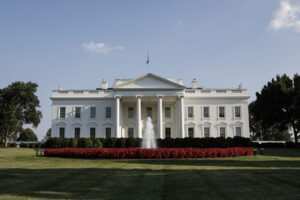How to recognize employee achievements internally
When done right it’s an important aspect of culture building.

It feels good to be recognized. That’s a universally human experience we can all relate to. But when it comes to nurturing a supportive organizational culture, internal comms can play a key role by recognizing the accomplishments of employees, both in and out of the office. We spoke with several comms leaders about how internal communicators can optimize their strategies around employee recognition to foster a more positive and vibrant company culture.
Making it personal
A strong organizational culture can not only help you retain top talent, but also attract promising new people from outside the organization, and internal comms can help by creating a strategy to recognize the great work employees do. According to Amanda Ponzar, chief communications and marketing officer at Creating Healthier Communities (CHC), that recognition is most impactful when it takes a multichannel approach.
Internal comms is essential for valuing employees and creating a positive culture,” Ponzar said. “Communications should always be looking for ways to elevate and amplify people.”
Katie Kohl, human resources director at Creating Healthier Communities, added that personal touches and customized approaches can help foster inspiration when employee achievements are announced to the company at large.
“Recognizing the accomplishments of team members helps employees feel connected to the workplace and helps to build the right workforce for the future,” Kohl said. “We take a human-centered approach to building the employee experience, and it all starts by demonstrating to employees that we value them by recognizing their contributions.”
“We consider recognition as one of our biggest drivers to make employees feel like they belong at our organization,” she continued, “which we believe ultimately results in increased employee retention.”
Upholding values
It’s clear that showing off what your team members have achieved is great for company culture — but it can also be a major plus for the business as a whole and maintaining its identity.
According to Sarah Fridovich, communications consultant and founder of Sarah Fridovich Communications, internal communicators must ensure that their recognition programs match the company’s stated values.
“More than ever, internal communications holds responsibility for building and modeling organizational culture,” Fridovich said.
“Internal comms should really think about the values and behaviors the organization is seeking to uphold and intentionally integrate them into employee recognition programs. On top of that, they should look to the employee population to see what matters to them — it’s okay to ask your employees what accomplishments they want to be recognized for.”
Multichannel and individualized approaches
On top of knowing what employees desire recognition for, internal comms should also consider how they are recognized.
When possible, internal comms should work with individual employees to customize recognition as much as possible to personal preferences.
“Some people thrive in the spotlight and others don’t,” Fridovich said. “Really getting to know your employees can help you create messaging that’s not only impactful but inspirational.”
Internal communicators should also customize their messages to each possible channel.
“It’s important to use the correct communication tools that work best and enhance communication for your organization,” Kohl said, adding incorporation of visuals has been impactful when recognizing employees CHC, where many people identify as visual learners.
Remember that recognition can take many forms — it doesn’t just have to be a promotion or a big win at work.
“We go out of our way to look for ways to recognize the team at all levels,” said Ponzar. “It could be getting an article published in a big publication, a new hire, or even something personal, like a new baby or just a roundup of a fun day at home with pets.”
Leadership buy-in matters
It’s great and all to have a plan in place to give your team the flowers they deserve, but it can be so much more impactful when organizational leadership is on board.
Fridovich said that leadership should provide an example of recognition that can trickle down to all levels of the organization.
“If the CEO sends an employee a note and says ‘Great job!’ They’re more likely to take that behavior and run with it. That spirit of recognition coming from the top can then have a wider inspirational impact on everyone on the team and throughout the organization.”
Sean Devlin is an editor at Ragan Communications. In his spare time he enjoys Philly sports, a good pint and ’90s trivia night.







